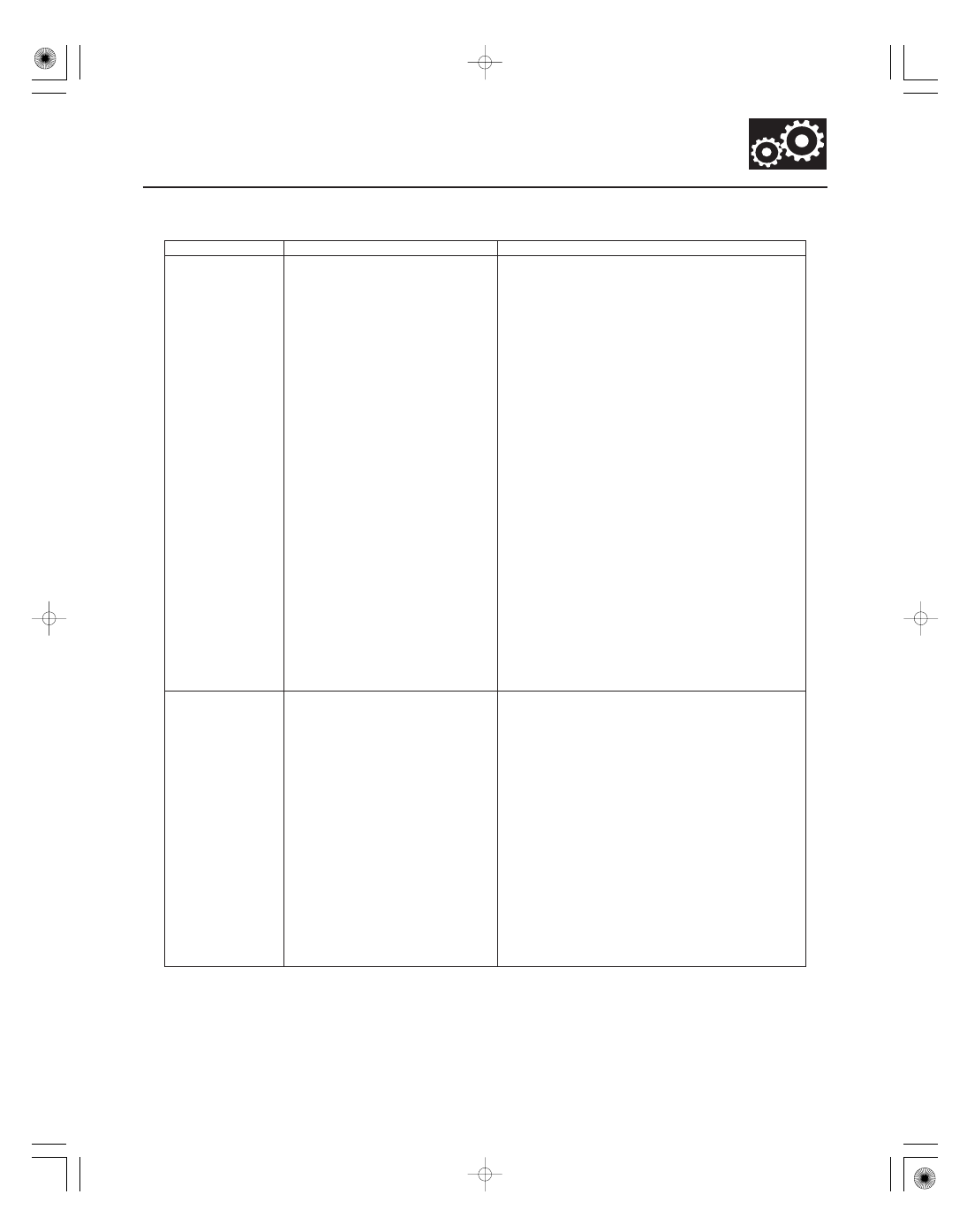Acura CSX. Manual - part 233

Symptom
Probable cause(s)
Notes
14-13
•
•
•
•
•
•
•
•
•
•
•
•
•
Engine runs, but
vehicle does not
move in any gear
1.
2.
3.
4.
5.
6.
7.
8.
9.
10.
Low ATF level
Shift cable broken or out of
adjustment
Connection between the shift
cable and transmission or
body is worn
ATF pump worn or binding
Regulator valve stuck or
spring worn
ATF strainer clogged
Mainshaft worn or damaged
Final gears worn or damaged
Transmission-to-engine
assembly error
Axle disengaged
Check the ATF level, and check the ATF cooler lines
for leaks and loose connections. If necessary, clean
the ATF cooler lines.
Check for a loose shift cable at the shift lever and
the selector control lever.
Improper alignment of ATF pump and torque
converter housing may cause ATF pump seizure.
The symptoms are mostly an rpm-related ticking
noise or a high pitched squeak.
Check the line pressure.
Be careful not to damage the torque converter
housing when replacing the main ball bearing. You
may also damage the ATF pump when you torque
down the main valve body. This will result in ATF
pump seizure if not detected. Use the proper tools.
Install the main seal flush with the torque converter
housing. If you push it into the torque converter
housing until it bottoms out, it will block the fluid
return passage and result in damage.
Check the ATF strainer for debris. If the ATF
strainer is clogged with particles of steel or
aluminum, inspect the ATF pump. If the ATF pump
is OK, find the damaged components that caused
the debris. If no cause for contamination is found,
replace the torque converter.
Inspect the differential pinion gears for wear. If the
differential pinion gears are worn, replace the
differential assembly, replace the ATF strainer,
thoroughly clean the transmission, and clean the
torque converter, cooler, and lines.
Vehicle moves in R,
but not in D, S, or
1st in S
1.
2.
3.
1st accumulator defective
1st gears worn or damaged
1st clutch defective
Check the 1st clutch pressure.
Inspect the clutch piston, the clutch piston check
valve, and the O-rings. Check the spring retainer
and the retainer seal for wear and damage. Inspect
the clearance between the clutch end-plate and the
top disc. If the clearance is out of tolerance, inspect
the clutch discs and the plates for wear and
damage. If the discs are worn or damaged, replace
them as a set. Inspect the clutch wave-plate height.
If the height is out of tolerance, replace the wave-
plate. If the discs and the plates are OK, adjust the
clearance with the clutch end-plate.
Inspect the 1st clutch feed pipe. If the 1st clutch
feed pipe is scored, replace the end cover.
Replace the secondary shaft if the bushing for the
1st clutch feed pipe is loose or damaged.
Check the 1st accumulator piston, the O-ring, and
the springs in the regulator valve body for wear
and damage.
08/08/21 14:37:08 61SNR030_140_0015